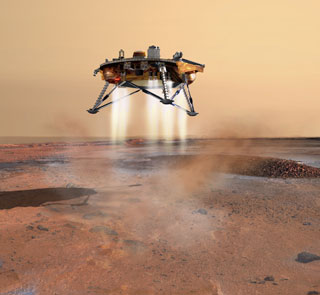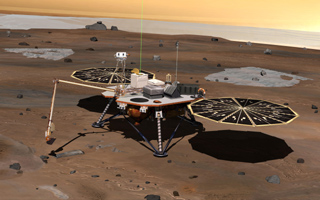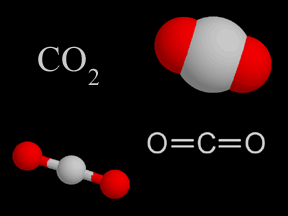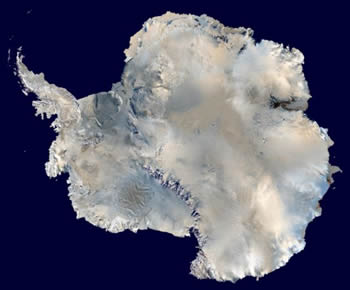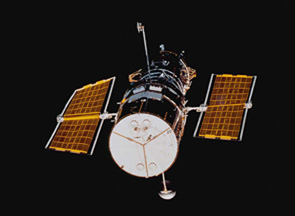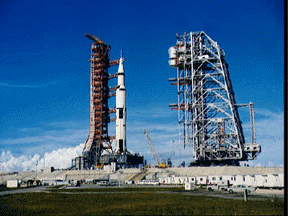Click on image for full size
Image courtesy of NASA/JPL-Calech/University of Arizona.
Related links:
Phoenix Instruments and Mission Objectives
Animation depicting Phoenix mission (small 3 Mb | large 31 Mb)
Phoenix Mars Lander
NASA sent a new spacecraft to Mars. It is called the Phoenix Mars Lander. Phoenix landed near the North Pole of Mars. Scientists think there is ice buried under the ground there. Life on Earth needs water. If there is (or ever was) life on Mars, maybe it needs water too. If Phoenix can find water ice on Mars, it might help us know whether there was ever life on Mars. If the robot finds ice, it will use its instruments to "taste" and "smell" it to figure out what kinds of chemicals are mixed in with the ice.
Phoenix blasted off from Florida in August 2007. It took 9 months to get to Mars. Phoenix landed on the northern plains of Mars on May 25, 2008. The lander is supposed to keep working for at least 90 sols (Martian days; about 92 Earth days).
Phoenix uses solar panels to make electricity. That electricity powers the robot. After about 90 days it will start to be winter at the Martian North Pole. Just like on Earth, in the winter the days are shorter and there is less sunlight. As it gets darker, the solar panels will stop making electricity. Phoenix will run out of power and will stop working.
Click here to learn about the instruments on Phoenix and also about the lander's mission.
Phoenix is landed at 68° North latitude on Mars. If that was on Earth, it would be in northern Alaska. NASA hopes Phoenix will last a little while into the Martian winter before it stops working. If it does, it may be able to watch ice build up on the land around it as winter begins. Dry ice will form around Phoenix. Dry ice is made from frozen carbon dioxide instead of water. The lander may get buried in one meter (3 feet) of dry ice!


